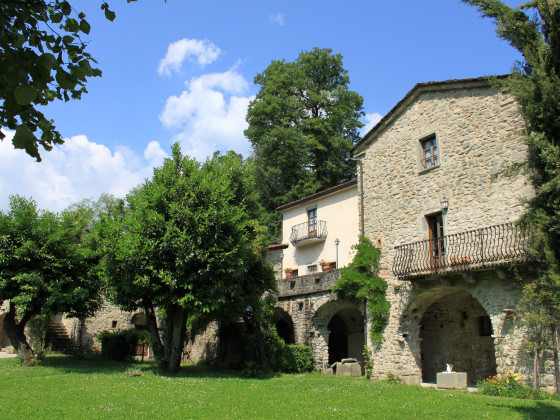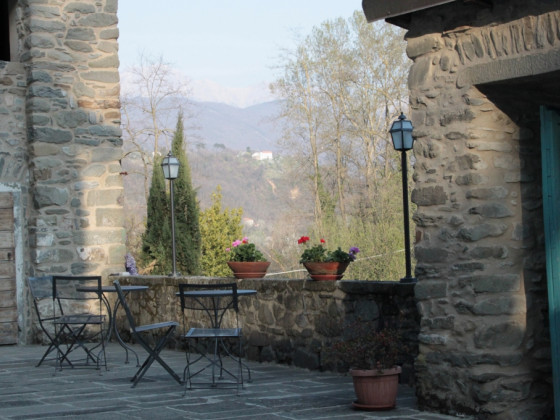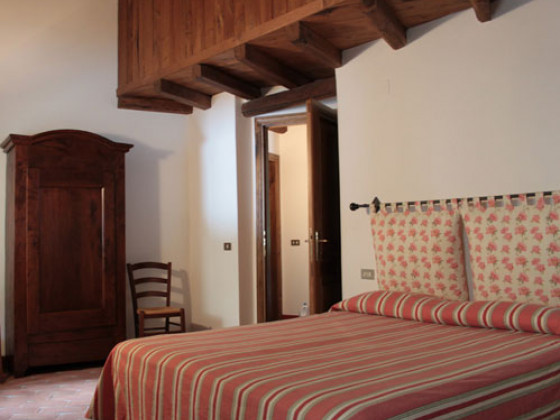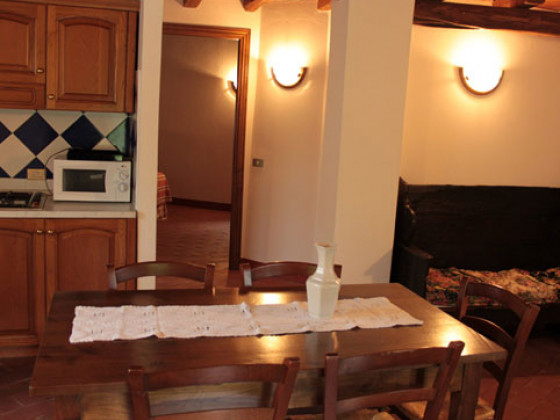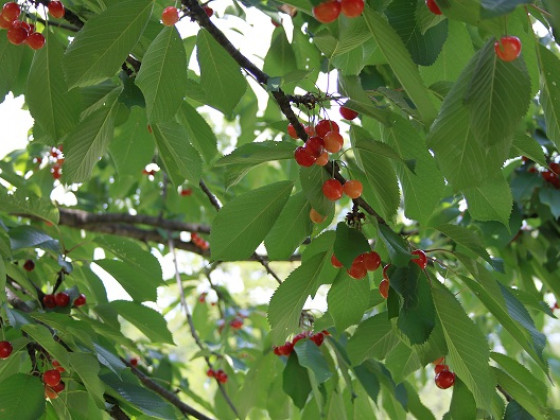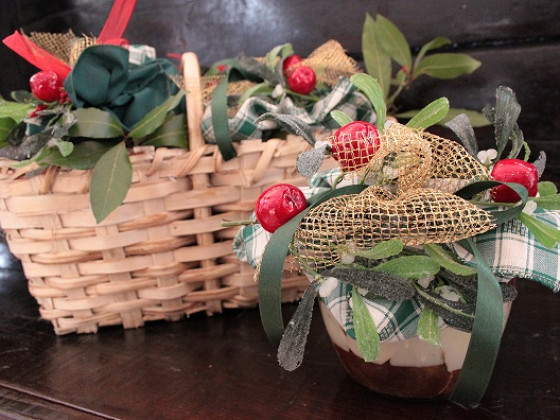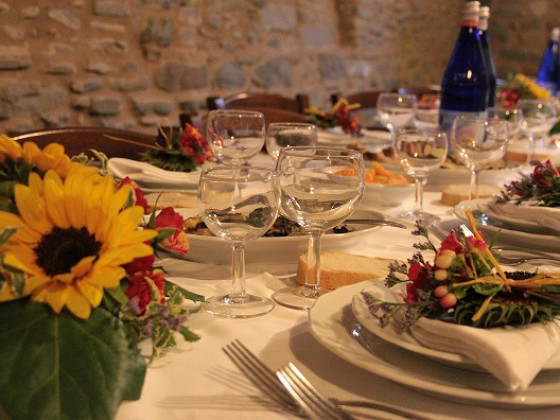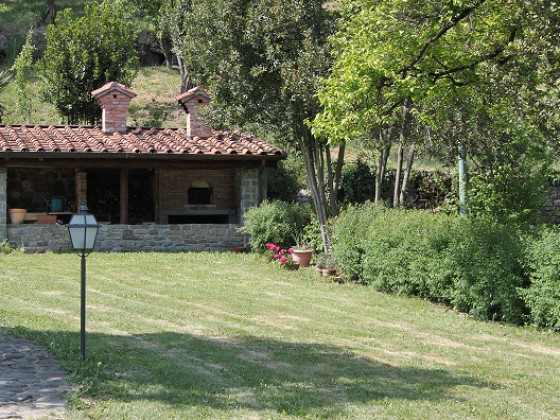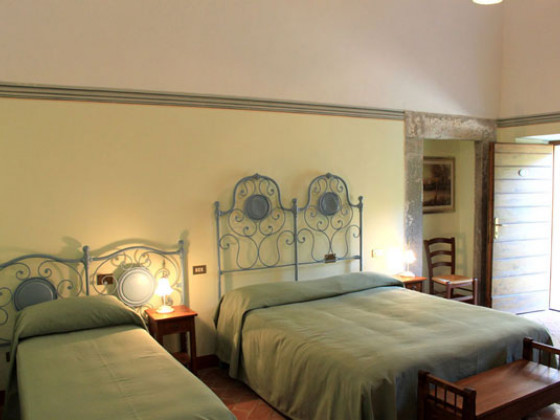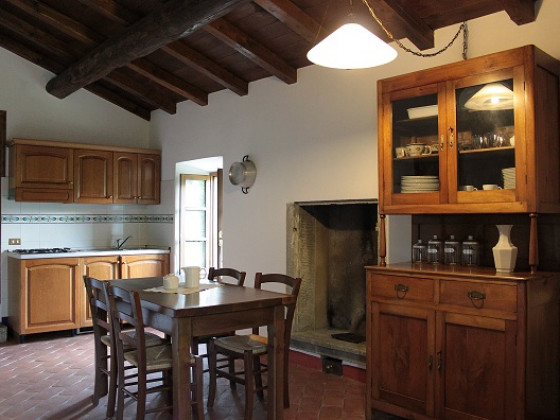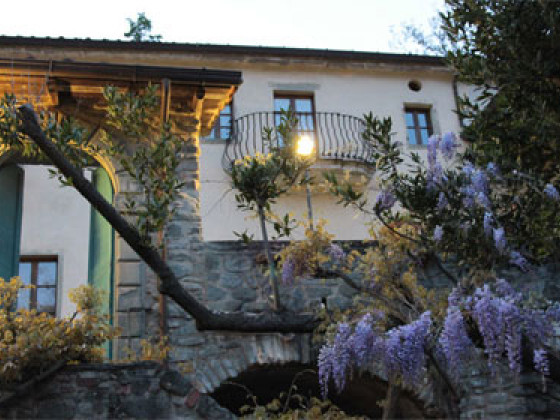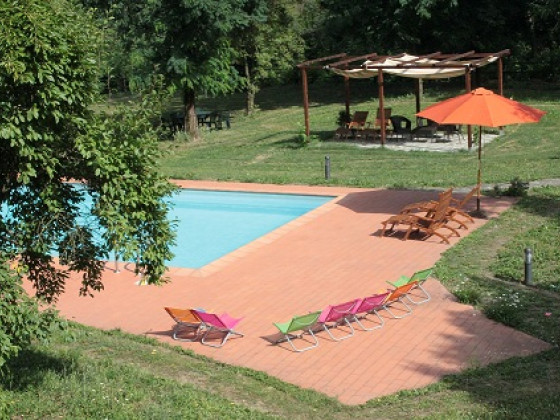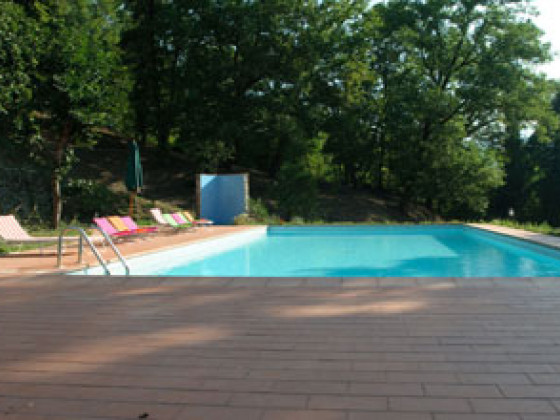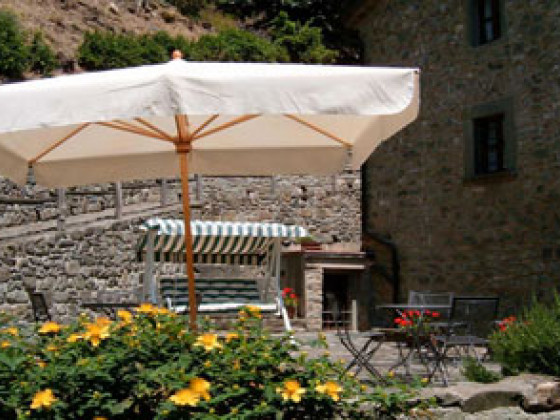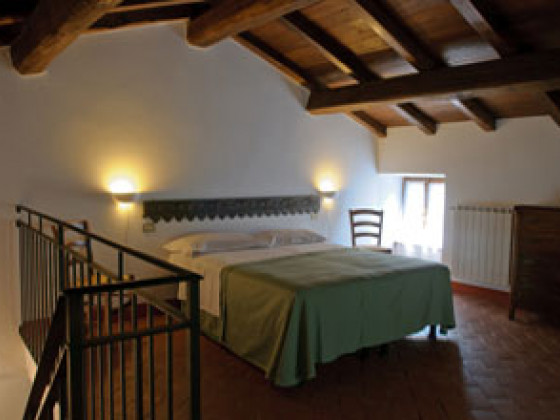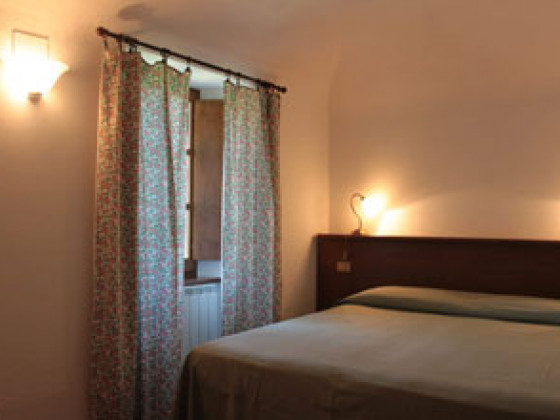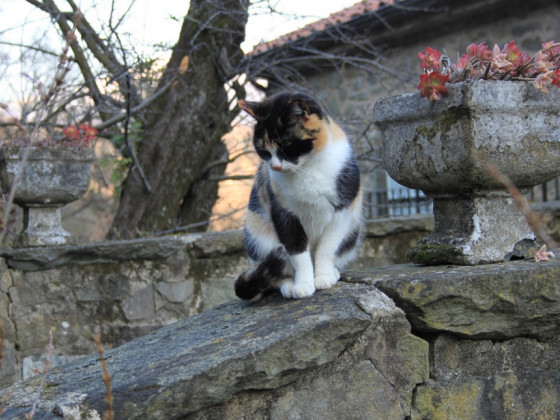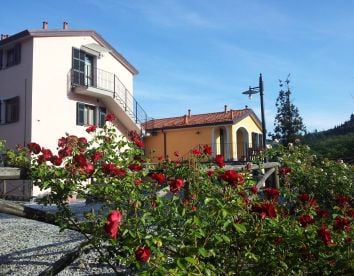
This property is managed by
Graziella
Description Il Glicine E La Lanterna
Our farm is a big beautiful house. We have meticulously restored: the roof is made of sandstone slabs, supported by strong wood beams and terracotta floors are authentic, baked tiles one by one. The walls and arches are exposed stone, and also in the dining rooms and in the breakfast room you can admire the antiquity of the structure.We are immersed in the green Lunigiana, unknown to most people, but close to the Cinque Terre. We are located near a river, and how to reach you pass a small bridge.
Rates Farm-house
| Minimum Price | Maximum Price | ||
|---|---|---|---|
| Price per person per night | 45 | 72 | |
| Price double room per night | 90 | 144 | |
| Triple room Price per night | 40 | 0 | |
| Price family room per night | 35 | 0 |
Description rooms
All rooms are newly refurbished, so you can offreire stay even more enjoyable. Spacious rooms with TV. Each room has a private bathroom. The apartments are nice and well furnished rooms that can accommodate from 2 to 5 people. Even guests can book the apartment in half board.

Number of people: 2

Number of people: 3

Number of people: 2

Number of people: 2

Number of people: 3

Number of people: 5
Services Farm-house
Services provided:Onsite restaurant6 x 12 m poolBreakfast buffetwi-fiLarge garden to relaxGazebo near the poolWood Stove and GrillDemonstration of cooking in the TextsTasting of cooking KM0Badges for Collecting MushroomsConcerts in the GardenFree guides and Small Tourist Material from consultationSmall Library and BookcrossingHOLIDAY PACKAGESAnd, by appointment:babysitterMini-courses (Lunigiana cuisine, painting, embroidery, patcwork, cross stitch, natural dyeing of wool)Massage
- Breakfast Room
- Free Wifi
- Park
- Outdoor Pool
- Garden
- Credit Card Accepted
- Mountainbikes
- Typical Product Market
- Free Guest Parking
- No Breakfast
- Kitchenette
- Kitchen
- Typical Furnishings
- Hairdryer
- Television
- Heating
- Nice View
- Shared Garden
- Restaurant
restaurant Farm-house Il Glicine E La Lanterna
The tradition has handed down a poor kitchen. A few elements, but masterfully combined, have left the base of the recipes that still in the pot or in the bake in the oven. Field greens, Prorcini mushrooms, chestnuts and lamb, testaroli, and "amor" filled with custard, cheese and honey DOP ..



Breakfast
The breakfast is buffet style, and you can choose to eat something sweet, salty, or both. Our jam, Lunigiana honey, salami and cheese, bread, cakes, pies and cakes homemade organic yogurt or home made ...
Surroundings (Pontremoli)
Lunigiana is an historical territory of Italy, which today falls within the provinces of La Spezia and Massa Carrara. Its borders derive from the ancient Roman settlement, later the medieval diocese of Luni, which no longer exists. Lunigiana covers an area from the Apennines to the Magra river, belonging in part to Tuscany and in part to Liguria. It takes its name from Luni, a Roman town, perhaps pre-dated by an Etruscan settlement. Some contend that the name Luni refers to the moon, a celestial body whose beauty is made all the more attractive when framed by the white-peaked Apuan Alps and high Apennine mountains.
Map
Frazione Casa Corvi N. 220, Direzione Bassone, 54027 Pontremoli - Massa-Carrara - Tuscany
How To Reach Us
- Motorway A15, Gate PONTREMOLI
- Pontremoli Station
- Near Airports: Pisa, Parma, Genova, Firenze
Ratings Farm-house Il Glicine E La Lanterna
Guest review
| Clean Room / Apartment : | |
| Location : | |
| Quality rooms : | |
| Services : | |
| Quality/ money : |
| | Coppia - 1/2025 |
Luogo molto romantico e suggestivo, camera ampia e fresca anche nei periodi più caldi. Spazi esterni molto accattivanti. Assolutamente consigliato. Massimo R. (Excellent)  | |
| | Famiglia Con Bambini - 4/2017 |
(Sufficient)  | |
| | Coppia - 9/2015 |
Il posto è molto piacevole, ed è stato un peccato non avere
più tempo per conoscere le zone vicine. Sebbene Pontremoli
offre due spettacoli unici, anche per l’Italia (e questo è molto
dire). Una villaggio parzialmente medievale vero, con il suo
Castello. La mostra delle Stele Figure della Lunigiana, che
costituiscono un pezzo di patrimonio straordinario, esposte
e allestite da uno dei grandi architetti italiani: Guido Canali.
La struttura della casa del Glicine e la Lanterna,
restaurata da un casale forse del S XVII, è molto suggestiva,
tenuta in modo eccellente e di rispetto per l'epoca. La nostra
stanza, bella, impeccabile e generosa nello spazio.
Non abbiamo fatto i pasti del mezzogiorno o cena, ma la
prima colazione era eccellente, preparata con vitto non di serie
(i soliti croissant da pacchetto del Super) ma con pane, marmellate
genuine, fatte nella casa, frutta del podere e un trattamento
gentile, amichevole.
Sicuramente molto raccomandabile per chi ama a natura, le cose
schiette, vere e semplici. Speriamo di ritornarci.
Irene Macchi e arch. Giancarlo Puppo (Excellent)  | |
| | Famiglia Con Bambini - 8/2015 |
Enormément de charme, un lieu paisible, un accueil très chaleureux et souriant, une cuisine savoureuse faite avec des produits locaux (et souvent tirés du jardin). A recommander (Excellent)  | |
| | Coppia - 9/2012 |
Per chi ama la tranquillità, l'ospitalità e l'ottima cucina, non può perdersi questa scenografia rubata ad una fiaba "il ponticello per attraversare il fiume, il parco impeccabile con sentiero di beule che conduce alla struttura di cotto e pietra...che aggiungere? Provare per credere (Excellent)  |
contact directly
Views 54624
